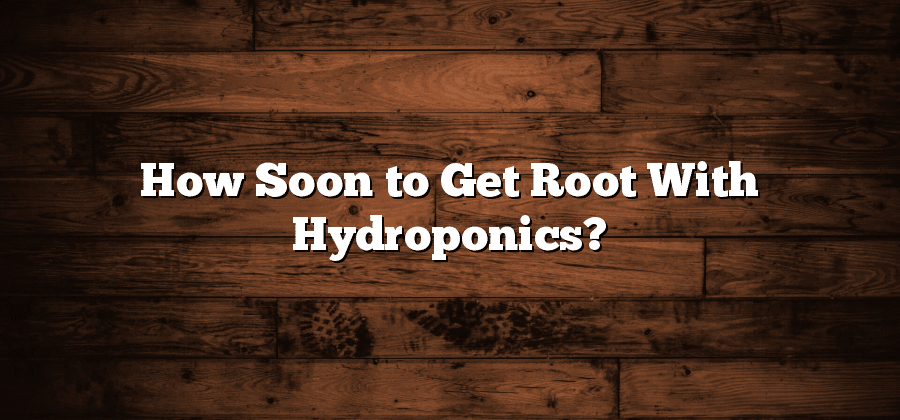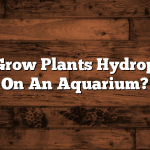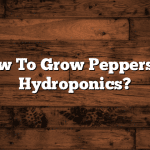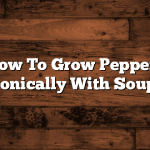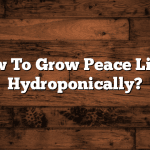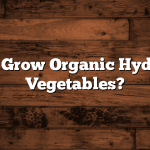Rooting Process in Hydroponics
Hydroponics, a method of growing plants without soil, offers a unique and efficient solution for the rooting process. In this system, plants receive nutrients directly from a nutrient-rich water solution, allowing them to focus their energy on root development. The rooting process in hydroponics involves the careful management of various factors to ensure optimal growth.
One of the key elements in the rooting process is the selection of the right hydroponic system. Different types of systems, such as the nutrient film technique (NFT), deep water culture (DWC), and ebb and flow, offer varying levels of control over the rooting environment. Each system has its own advantages and disadvantages, depending on the specific requirements of the plants being cultivated. By understanding the characteristics of each system, growers can choose the most suitable one to promote root growth and development. Additionally, factors such as temperature, humidity, and light intensity can also impact the rooting process in hydroponics. By carefully adjusting these variables, growers can create an optimal environment that accelerates root development and ultimately leads to healthy and vibrant plants.
Different Types of Hydroponic Systems
Hydroponic systems have revolutionized the way plants are grown, offering a highly efficient and controlled method that eliminates the need for soil. There are several different types of hydroponic systems, each with its unique advantages and features. One popular type is the nutrient film technique (NFT) system, where a thin film of nutrient solution continuously flows over the roots of the plants. This system provides a consistent supply of oxygen and nutrients while minimizing water usage. Another commonly used system is the deep water culture (DWC) system, which involves suspending the plant roots in a nutrient-rich water solution. This system is simple to set up and allows for excellent nutrient uptake, promoting fast and vigorous plant growth.
In addition to these, there are other types of hydroponic systems like the drip system, ebb and flow system, and aeroponic system, each with their variations and benefits. The choice of hydroponic system will depend on factors such as the type of plants being grown, available space, and the specific requirements of the grower. It is essential to thoroughly research and consider these factors to select the most suitable hydroponic system for optimal plant growth and overall productivity. Whether it be a small-scale home setup or a large commercial operation, the variety of hydroponic systems available ensures that there is an option for every grower to successfully cultivate their plants in a soil-less environment.
Suitable Plants for Hydroponic Rooting
Suitable Plants for Hydroponic Rooting
When it comes to hydroponic rooting, choosing the right plants can greatly impact the success of your system. Certain plants are better suited for this type of growing method due to their adaptability and ability to thrive without soil.
One such plant is lettuce, which is widely grown in hydroponic setups due to its quick growth and shallow root system. Lettuce varieties such as Bibb, Butterhead, and Romaine are popular choices for hydroponic gardeners, as they require minimal space and can be harvested within a few weeks. Additionally, herbs like basil, dill, and cilantro are also ideal for hydroponic rooting, as they don’t require extensive root systems and can be harvested continuously for fresh and flavorful herbs.
Remember, the key to successful hydroponic rooting lies in selecting plants that are adaptable to soilless conditions and have shallow root systems. With the right plant selection, you can create a thriving hydroponic garden that yields a bountiful harvest year-round. Continue reading to learn more about factors affecting rooting speed in hydroponics.
Factors Affecting Rooting Speed in Hydroponics
Rooting speed in hydroponics is influenced by several key factors that need careful consideration to optimize growth and yield. One such factor is the type and quality of the rooting medium used. The choice of a suitable medium directly affects root development, as it provides support and aeration for the plant roots. Different types of mediums, such as perlite, coconut coir, or vermiculite, offer varying water-holding capacities and drainage abilities. Therefore, selecting the appropriate medium based on the specific plant’s needs plays a crucial role in accelerating the rooting process.
Another significant factor that affects rooting speed in hydroponics is ambient temperature and humidity levels. Ideally, maintaining an optimal temperature range of 65-75°F (18-24°C) promotes root growth. Higher temperatures can lead to excessive transpiration, causing stress on the plants, while lower temperatures may hinder the overall growth rate. In addition to temperature, humidity levels should be carefully regulated, as high humidity can result in poor aeration and increased risk of diseases, whereas low humidity can lead to excessive transpiration and water stress. Striking the right balance between temperature and humidity creates the ideal environment for roots to proliferate and establish themselves effectively in the hydroponic system.
Overall, understanding and managing these factors, along with others like nutrient solution, light intensity, and pH levels, is essential for speeding up the rooting process in hydroponics. By meticulously controlling these variables, hydroponic growers can ensure optimal root development, leading to healthier and more productive plants.
Optimal Nutrient Solution for Rooting in Hydroponics
Hydroponics is a method of growing plants without soil, using a solution of nutrients instead. In order to achieve optimal rooting in hydroponics, it is crucial to provide the plants with the right nutrient solution. The nutrient solution serves as the primary source of essential elements and minerals required for the plants’ growth and development.
The first important consideration when preparing the optimal nutrient solution for rooting in hydroponics is the balance of essential nutrients. The solution should contain a balanced combination of macronutrients such as nitrogen, phosphorus, and potassium, as well as micronutrients like iron, manganese, and zinc. These nutrients are necessary for healthy root development and overall plant growth. Additionally, it is important to monitor and adjust the pH of the solution to ensure proper nutrient uptake by the plants. A pH range between 5.5 and 6.5 is generally ideal for most plants as it allows for optimal nutrient absorption. By providing plants with a well-balanced nutrient solution and maintaining the appropriate pH level, hydroponic growers can ensure successful rooting and healthy plant growth.
